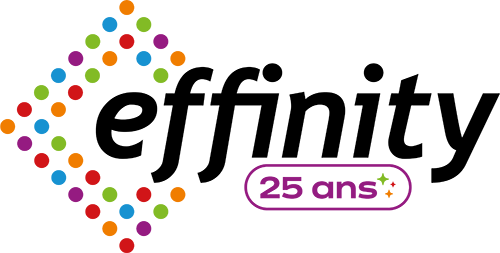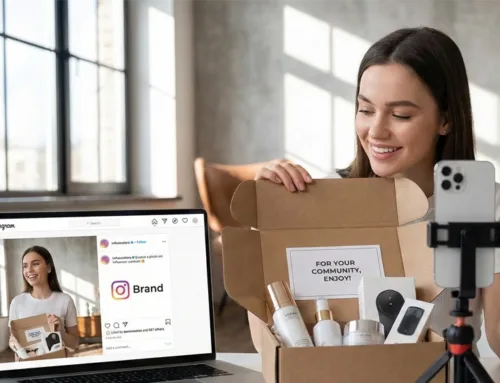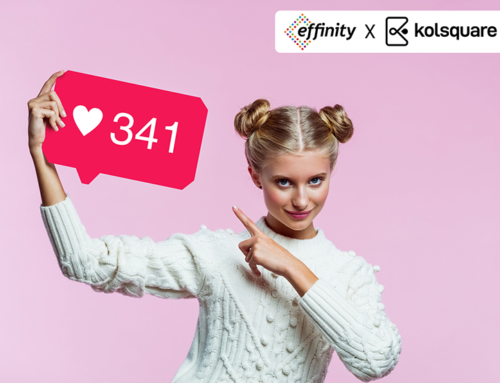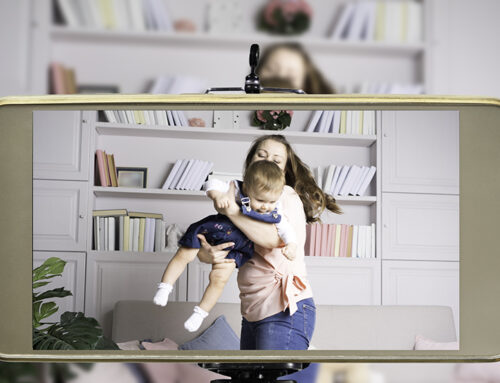The publication of the very first edition of the Influence Barometer by the Collectif Pour les Acteurs du Marketing Digital (CPA) and the Union des Métiers de l’Influence et des Créateurs de Contenu (UMICC) marks a turning point for digital marketing in France. Effinity, an influencer marketing agency and member of these organizations, played an active role in its preparation. This Influence Barometer aims to transform “noise into data” and “intuition into strategy”, offering a detailed, quantified snapshot of a rapidly maturing sector. By analyzing data from over 47,000 creators over the course of a year, this study provides essential insights for advertisers, agencies and creators alike. The scope of the study, based on data from Kolsquare, Reech and Traackr, covers content creators with more than 10,000 subscribers and at least 30% of their audience in France, on Instagram, TikTok, Snapchat, YouTube and X. All content published by these creators, mentioning at least one of the 1,000 brands followed in 10 business sectors, was surveyed over 12 months, from April 1, 2024 to March 31, 2025.
The Influence Barometer is structured around three fundamental pillars: the structuring role of influence platforms, the strategic activation of gifting andaffiliation for performance.
The Influence Barometer is now available for download.
French influencer market: volume, authenticity and key platforms
To build effective influence strategies, it is imperative to understand the true scale and nature of this market in France. The Influence Barometer unveils the fundamental figures that enable us to overcome preconceived ideas. It quantifies the volume of activity, reveals the overwhelming share of organic over commercial, and deciphers the dynamics of the platforms and types of creators that structure this ecosystem.
Industry at full throttle: dizzying figures
Far from being a mere niche, influencer marketing in France is a fast-paced industry. Over a 12-month period, the figures testify to massive and continuous activity:
- 47,200 content creators generated over 322,000 brand mentions.
- This volume represents one brand mention every 1 minute and 40 seconds.
- All this content generated 27.6 billion views and 1.29 billion engagements.
The myth of “paid” influence: the power of spontaneous sharing
Perhaps the most revealing figure from this barometer is this: only 15% of content mentioning a brand is commercial collaboration (remuneration, gifting, affiliation, etc.). This means that the overwhelming majority, 85% of mentions, are spontaneous shares that do not involve collaboration. These are mostly purchases made by the designer, which he or she will talk about by mentioning the brand, demonstrating an organic attachment and genuine credibility towards brands.
Instagram vs. TikTok: The duel of the giants
An analysis of the platforms reveals a strategic complementarity between the two market leaders. While Instagram dominates in terms of volume, TikTok stands out for its ability to generate disproportionate virality.
| Indicators | TikTok | |
|---|---|---|
| Breakdown of designers | 65% | 30% |
| Breakdown of content | 73% | 22% |
| Breakdown of views | 58% | 39% |
| Breakdown of commitments | 63% | 35% |
Verdict: Instagram dominates in terms of volume and creator base, but TikTok offers a far superior return on visibility and engagement per publication.
This data confirms that Instagram has established itself as the “pivotal network” for influence in France, concentrating the majority of creators and content. However, TikTok confirms its “viral power”: with just 22% of content, the platform generates almost 40% of views and 35% of engagements, proving its unique ability to amplify the reach of campaigns.
Creator strategy: choosing the right profile for the right objective
The Influence Barometer shows that there is no such thing as the “best” creator profile, but rather a strategic complementarity between the different typologies. The choice must be guided by precise objectives.
- Micro and Mid Creators (10k – 250k): They have the highest engagement rates (4.42% on Instagram and 6.21% on TikTok for micro-creators). They are ideal for reinforcing authenticity, credibility and generating authentic content (UGC) thanks to their strong proximity to their communities.
- Macro Creators (250k – 1M): Their role is complementary. With engagement rates of 2.78% on Instagram and 5.15% on TikTok, they are the perfect lever to extend the reach of campaigns and generate increased visibility on a large scale.
- VIP and Mega Creators (1M+): Although their engagement rates are lower (for example, 1.72% on Instagram for Mega Creators), their awareness potential remains incomparable. They are particularly well-suited for image campaigns, high-impact product launches and generating strategic attention spikes.
In short, the French market is not only vast, it’s fundamentally organic, forcing brands to earn their place in the conversation rather than simply buy it.
Gifting: the secret weapon of influence for authentic content and massive social proof
Much more than simply sending products, gifting has established itself as a strategic lever at the crossroads of brand awareness, recommendation and engagement. It enables the massive generation of authentic content (UGC) and social proof. This section of the Influence Barometer analyses how this practice, when well orchestrated, generates measurable value for brands.
The Gifting ecosystem in figures
The Influence Barometer reveals the extent of this practice in France, which constitutes a veritable ecosystem of organic content creation.
- 15,000 gifting campaigns were carried out over one year.
- These campaigns generated 321,000 posts from designers.
- The set produced 1.4 billion views.
- Over 80 million interactions were generated by this content.
Beauty, the undisputed queen of gifting
The Beauty/Health/Hygiene sector unquestionably dominates the gifting universe. The figures speak for themselves: it accounts for 67% of campaigns, 80% of posts and 75% of views. This is due to the very nature of products, which lend themselves perfectly to testing, visual demonstration and personal recommendation. As Garnier’s Thomas Jouanin points out: “Our stars are our consumers. Using micro-influence was an obvious way for us to continue communicating in an authentic way…”
High-potential sectors: beyond Beauty
While beauty dominates in terms of volume, other sectors are showing remarkable performance and significant growth potential, each with its own strengths.
- Food: This sector stands out for its attractiveness, with an average of 385 applications per campaign (the highest) and an excellent interaction rate of 7.2%.
- Déco & Bricolage: It enjoys exceptional visibility, with an average of 192,277 views per campaign, demonstrating the visual and inspirational power of this universe.
- High-Tech: This sector demonstrates audiences’ interest in expert advice, with a very high interaction rate of 9.7%, a sign of a community in search of credible recommendations.
- Gaming: With an exceptional interaction rate of 17.5%, the highest of any sector, gaming demonstrates the hyper-reactivity of its community, although gifting is still under-exploited.
These figures reveal targeted opportunities: Food and Gaming don’t perform on raw visibility, but on the passionate engagement of niche communities, offering fertile ground for ultra-qualified activations. Gifting is thus asserting itself as the strategic driver of social proof, transforming the product experience into a credible, large-scale recommendation.
Affiliation: when influence turns into sales performance
This section of the Influence Barometer addresses the ultimate maturity point of influencer marketing: its ability to generate a direct, measurable return on investment (ROI). Affiliation positions itself as the bridge between the trust established by creators with their communities and the performance demands of marketing departments. It transforms the influencer into a genuine acquisition partner.
Global performance: a profitable lever
The overall results of affiliate influence marketing confirm its effectiveness as a sales channel in its own right.
- Total sales generated for advertisers amounted to 138.9 million euros.
- 15.7 million in commissions paid to designers.
- An impressive average return on investment of €8 in sales generated for every €1 invested.
The best-performing sectors in terms of influence
Affiliate marketing performance varies considerably from one sector to another, each with its own levers for success. The table below ranks the best-performing sectors according to key indicators.
| Sector | ROI (For €1 invested) | Sales generated | Average basket |
| Video games / Gaming | 17 € | 7,1 M€ | 122 € |
| Fashion | 10 € | 31 M€ | 56 € |
| Beauty, Health, Hygiene | 9 € | 13,2 M€ | 58 € |
| High Tech | 9 € | 60 M€ | 157 € |
| Sports | 8 € | 14,4 M€ | 103 € |
Verdict: Gaming offers unrivalled ROI, High-Tech generates the most gross sales, while Fashion demonstrates exceptional maturity and conversion efficiency.
In-depth analysis: keys to success by sector
- Gaming: Its exceptional ROI of €17 is explained by a passionate audience, ready to invest, and high average shopping baskets. The sector is highly professionalized, and although the data does not include Twitch, this platform is in fact dominant and essential to any strategy.
- Fashion: With an ROI of €10 and a high conversion rate of 0.96%, fashion’s success is based on a mature ecosystem. This conversion efficiency, despite a modest average basket (€56), demonstrates the sector’s ability to generate frequent impulse purchases thanks to the inspirational power of designers.
- High-Tech: Generating the most sales (€60 million), this sector performs well because audiences actively seek out expert opinions and comparisons. Here, influence becomes an essential lever of credibility and reassurance before purchase.
- Travel: Although not ranked in the top 5 for overall ROI, this sector stands out for having the highest average commission rate (21%) and an average shopping basket of €126. This reflects a longer but very high-value decision cycle.
Influence’s ability to adapt to the specificities of each sector is proof of its strategic flexibility, and definitively confirms its status as a mature, quantifiable sales channel.
Key lessons for navigating tomorrow’s influence
This first Influence Barometer paints an objective, quantified picture of a mature, complex and high-performance market. Three strategic imperatives emerge to guide brands.
- Shift from a logic of purchase to a logic of merit: with 85% of spontaneous mentions, success is no longer measured by the budget invested, but by a brand’s ability to become an organic and credible choice for creators. Levers like gifting are powerful tools for building this relationship of trust.
- Orchestrate a tailor-made strategic mix: the era of intuition is over. Success depends on making the right choices: selecting the right platforms (the volume of Instagram versus the virality of TikTok), the right creator profiles (the credibility of micro-influencers versus the notoriety of VIPs) and the right levers (the social proof of gifting versus the ROI of affiliation) according to precise objectives.
- Integrate influence as a performance channel in its own right: influence is no longer a simple lever for brand awareness. Thanks to mechanisms such as affiliation, it has become a quantifiable acquisition channel, capable of generating significant sales and measurable ROI, rivaling other digital marketing channels.
By transforming perceptions into quantified certainties, this first edition of the CPA and UMICC influence barometer marks a decisive step in the professionalization of a sector that has become absolutely central to the French digital ecosystem.
Mis à jour le 1 December 2025
Mis à jour le 1 December 2025




